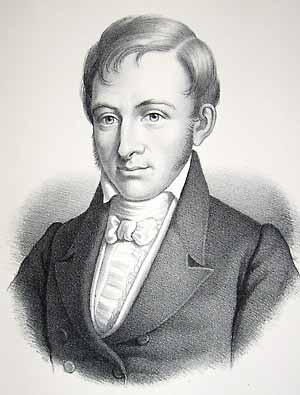Etymology and Surprising Origin of Words in English | Page 2
Methodologies in Etymology
Look-Alikes and Sound-Alikes
In the past, etymologists simply compared words and phrases that sounded or looked alike across languages or in written records. As a result, etymologies were often by chance.

Rasmus Rask (Public Domain)
In-Depth Comparisons
As etymology evolved over time, nineteenth century linguists found patterns that linked words in European languages even though the words seemed unrelated. For example, in the early 1800s Danish linguist and philologist Rasmus Rask proposed that a set of regular correspondences in speech sounds indicated that Western and Eastern Germanic languages were somehow linked their origins an ancestral language. He also proposed that such correspondences tied Germanic languages together with Lithanian, Slavonic, Greek, and Latin languages.
In 1822, German philologist Jacob Grimm picked up on Rask’s and others’ ideas and proposed a systematic account of sound changes (e.g., between Latin p and Germanic f) that ultimately revealed an ancestral language connecting European languages. These systematic changes in the evolution of words from the ancestral language to modern European languages became known as Grimm’s Law.
Books and research papers have been written on Grimm’s Law, so an extensive discussion is beyond the scope of this lesson. Here are a few examples of what Grimm found.
- Ancient unvoiced /p/, /t/, /k/ sounds became
- English /f/, /θ/, /h/
- Old High German /f/, /d/, /h/
- Ancience voiced /b/, /d/, g/ sounds became
- English unvoiced /p/, /t/, /k/
- Old High German stops /f/, /ts/, /x/
The ancestral language became known as Proto-Indo-European (PIE). We will discuss it later in the lesson.
These rules explain the connections between the ancienct proto-language root *dwo- (meaning “two”) and the following cognates:
- two in English
- zwei /tsvaɪ/ in
- twee /tveː/ in Dutch
- två /tvo:/ in in Swedish
- to /tu/ in Norwegian
In other languages, however, other rules applied, which explains whey the same ancienct proto-language root *dwo- (meaning “two”) developed into the following cognates:
- δύο /ðiːo/ in Greek
- duo in Latin
- dos in Spanish
- doi in Romanian
- dwa /dva/ in Polish
- दो /do/ in Hindi
- دو /du/ in Persian